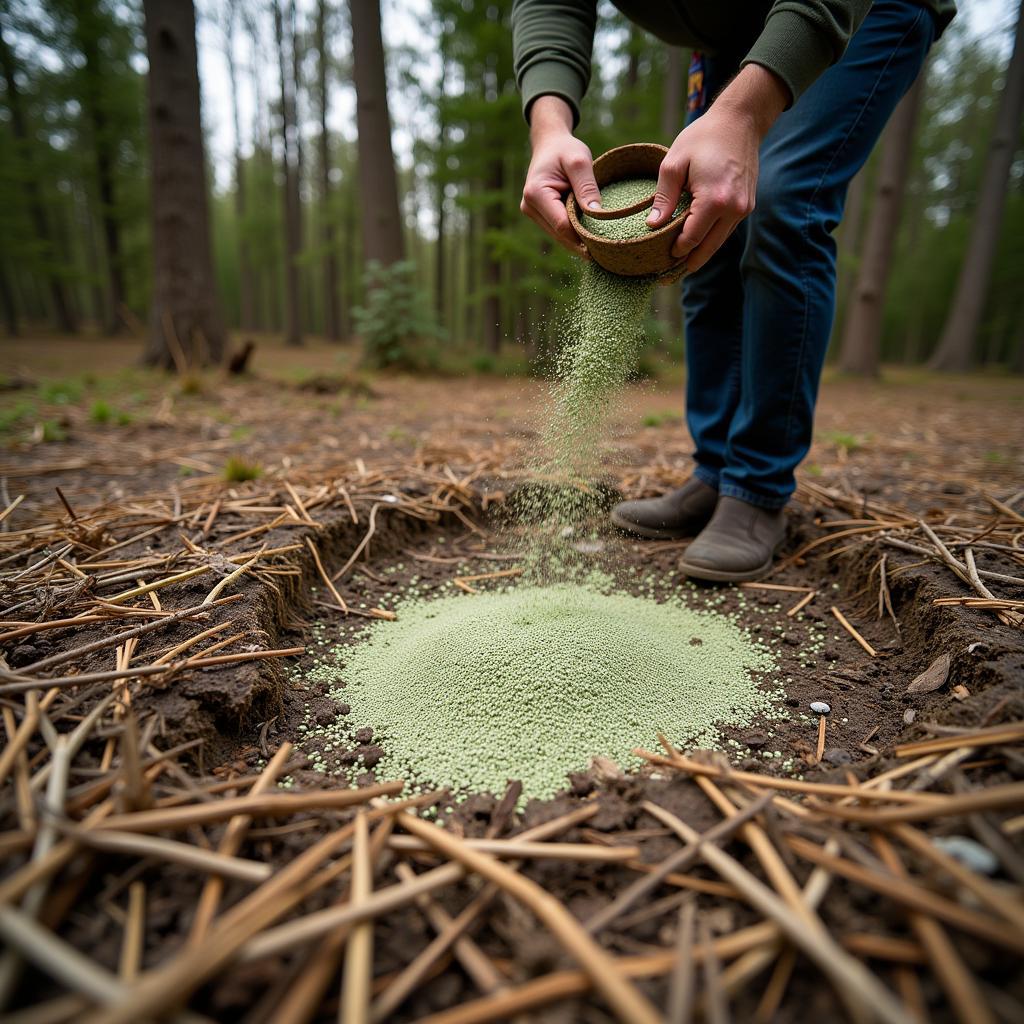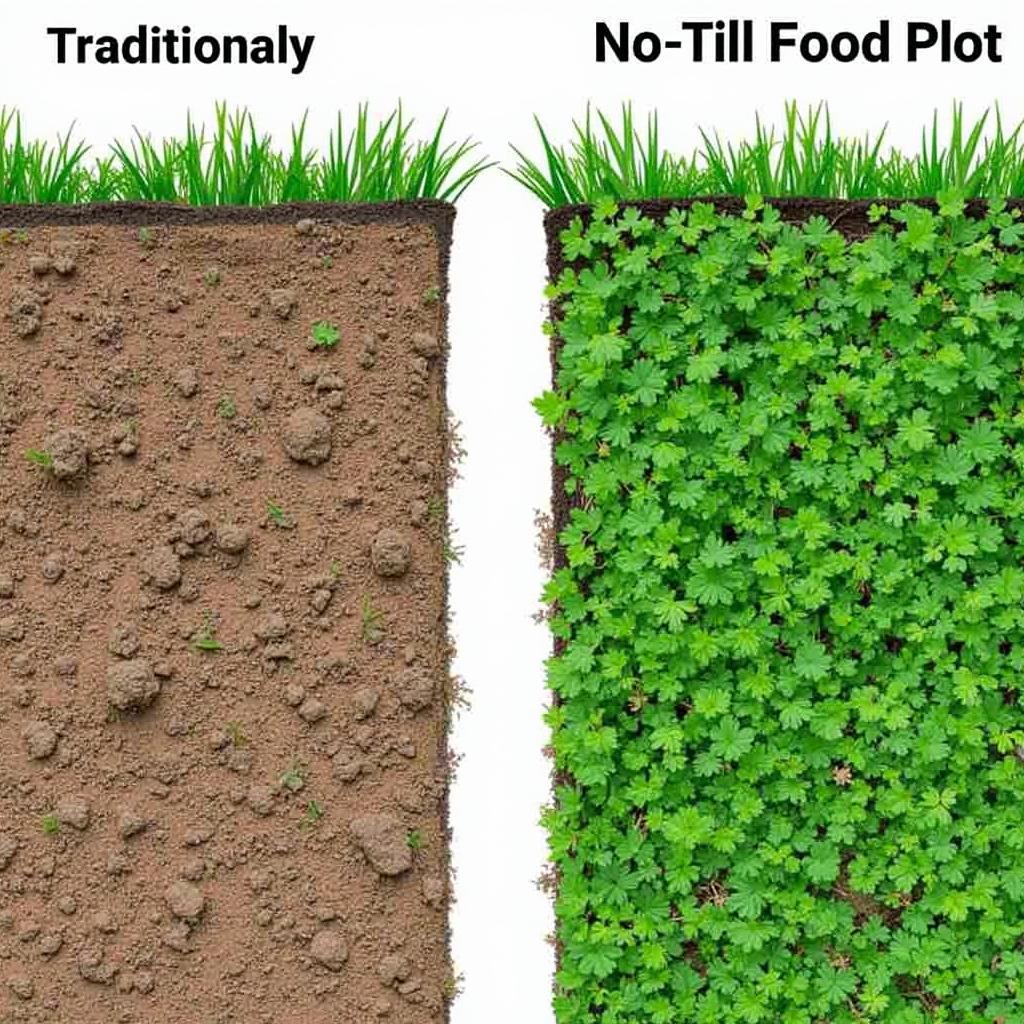No-till clover food plots are gaining popularity among hunters and wildlife enthusiasts for their numerous benefits. They offer a sustainable, cost-effective, and environmentally friendly way to provide nutritious forage for deer, turkey, and other wildlife. This method minimizes soil disturbance, enhances soil health, and creates a thriving habitat that supports a diverse ecosystem. Let’s delve into the world of no-till clover food plots and learn how to establish and maintain one successfully.
Why Choose a No-Till Clover Food Plot?
Traditional food plot establishment involves tilling the soil, which can lead to soil erosion, nutrient loss, and weed proliferation. No-till planting, on the other hand, leaves the existing vegetation intact, creating a protective layer that suppresses weeds, retains moisture, and improves soil structure. This method is particularly beneficial for sloped terrain, reducing erosion and runoff. Clover, a nitrogen-fixing legume, enhances soil fertility, reducing the need for chemical fertilizers. It’s a win-win for wildlife and the environment. Not to mention, it saves you time and effort! You can also try food plot clover for other methods of planting.
Getting Started with Your No-Till Clover Food Plot
The first step is to choose the right clover species for your region and soil type. White clover, red clover, and crimson clover are popular choices, each with its own advantages. Consider factors like soil pH, drainage, and sunlight when making your selection. Next, you’ll need to prepare the site by suppressing the existing vegetation. Herbicides containing glyphosate are commonly used for this purpose. Once the existing vegetation is dead, you can broadcast your clover seed directly onto the soil surface. A light raking or dragging can help incorporate the seed into the soil. Timing is crucial; early spring or late summer are ideal for planting clover.
 No-Till Clover Planting Process
No-Till Clover Planting Process
Maintaining Your No-Till Clover Food Plot
Once your no-till clover food plot is established, minimal maintenance is required. Regular soil testing is recommended to monitor pH and nutrient levels. You might need to apply lime or fertilizer occasionally to maintain optimal growing conditions. Mowing or controlled grazing can help control weeds and encourage vigorous clover growth. Overseeding every few years can also help maintain a healthy, productive food plot. Looking for more food plot ideas? Consider a throw and go food plot for a low-maintenance option.
Common Challenges and Solutions
One common challenge with no-till clover food plots is weed competition. While the no-till method helps suppress weeds, they can still emerge. Selective herbicides or hand-pulling can be used to control unwanted vegetation. Another issue is ensuring good seed-to-soil contact. Using a roller or drag after broadcasting the seed can help improve germination rates. Deer pressure can also be a concern, especially in areas with high deer populations. Fencing or repellents can protect your food plot until the clover is well-established. A spring food plot mix might offer additional options for deer forage.
Is No-Till Right for You?
Deciding to go no-till is a great step toward a sustainable food plot. Consider your available resources, land characteristics, and wildlife goals when making your decision. The benefits of no-till farming, including improved soil health and reduced labor, make it an attractive option for many landowners. “No-till is not just a trend; it’s a commitment to responsible land management,” says Dr. Emily Carter, Wildlife Biologist. “By embracing this method, we can create thriving habitats that benefit both wildlife and the environment.” If you’re looking to attract turkeys, a food plot for turkeys could be beneficial, even with a no-till approach. Another expert, John Miller, a seasoned hunter, adds, “No-till clover has consistently provided excellent forage on my property, drawing in more deer than ever before.”
 Comparing Till vs. No-Till Plots
Comparing Till vs. No-Till Plots
In conclusion, establishing a no-till clover food plot is a rewarding endeavor that can enhance your property and provide valuable forage for wildlife. By following these guidelines and adapting them to your specific circumstances, you can create a thriving, sustainable food plot that benefits both the environment and the animals you seek to attract. Explore different options like food plots for turkey to further enhance your wildlife management strategy. No-till clover food plots offer a sustainable and effective way to improve your hunting experience and contribute to conservation efforts.
For support, please contact us at Phone Number: 02437655121, Email: minacones@gmail.com Or visit us at: 3PGH+8R9, ĐT70A, thôn Trung, Bắc Từ Liêm, Hà Nội, Việt Nam. We have a 24/7 customer service team.